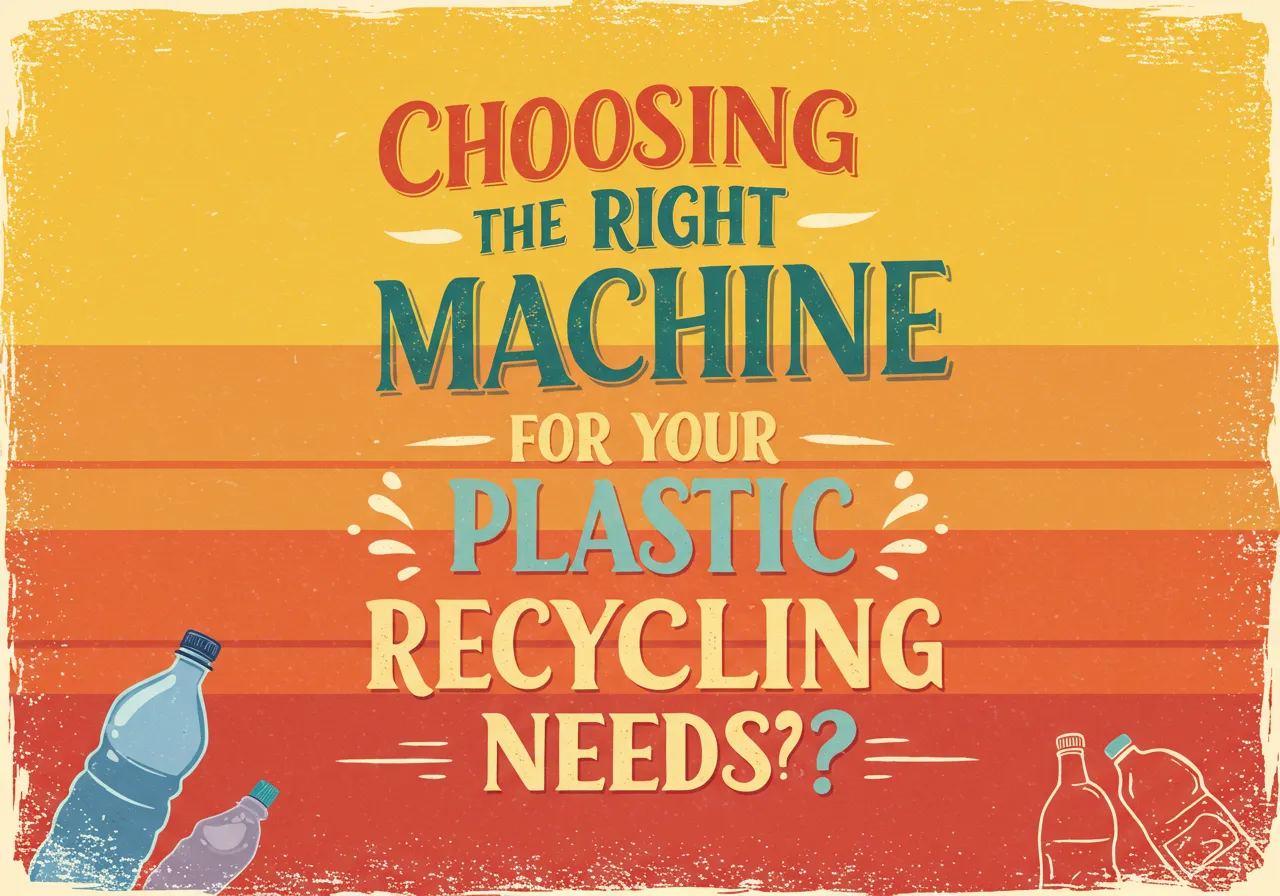Selecionando o direito máquina para reciclagem de plástico é crucial para a eficiência da sua operação. Tanto os cortadores-compactadores quanto os trituradores servem para reduzir o tamanho dos resíduos plásticos, mas operam de maneiras distintas. Este artigo ajudará você a determinar qual máquina é mais adequada para suas necessidades específicas de reciclagem.
Understanding Your Input Material
The first step in choosing between a cutter-compactor and a shredder is to analyze the characteristics of the plastic waste you are processing. Consider these factors:
- Type of Plastic: Are you dealing with flexible materials like polyethylene (PE) and polypropylene (PP), often found in packaging? Or are you processing rigid, thick plastics and industrial scrap? Different types of plastics require different processing methods. According to the EPA, PE and PP are commonly recycled, but they each have unique processing requirements.
- Size and Form: Are the plastics in the form of films, bags, or rigid pieces? Are the items large and bulky, or smaller and more manageable? The size and form of the plastic will impact how the machine processes it. For example, non-woven fabrics or PP raffia may be better suited for a shredder because these materials are often bulky and come in large bags.
- Contamination: What types of contaminants are typically present in your waste stream? Some cutter-compactors and shredders are designed to handle specific contaminants better than others.
Cutter-Compactor: Best for Flexible and Consistent Processing
Cutter-compactors are ideal for processing flexible plastics such as films, packaging, and other PE and PP materials. The dual-action blade system in a cutter-compactor cuts and mixes these materials, creating a uniform mixture for extrusion. Here’s why a cutter-compactor might be the best choice for your operation:
- Homogenization: The mixing action of the cutter-compactor ensures a consistent feed to the extruder, which is crucial for producing high-quality pellets. This is especially useful for recycling both printed and unprinted packaging.
- Integrated Processing: Cutter-compactors combine cutting, extrusion, and pelletizing in one streamlined system, reducing space requirements and eliminating the need for extra pre-processing steps.
- Gentle Cutting: Cutter-compactors minimize material degradation, which is vital when processing polymers. The gentle cutting action helps preserve the integrity of the polymer’s molecular chains, ensuring the final product performs well.
Destruidor: Best for Heavy-Duty Size Reduction
Shredders are ideal for handling bulky and dense plastics. Their powerful rotating blades and hydraulic ram system are built to crush and tear through large plastic pieces. If your waste includes the following types of materials, a shredder may be your best option:
- Hard Plastics: Shredders are perfect for reducing thick, rigid plastics, which a cutter-compactor may struggle to handle.
- Lumps and Large Items: Shredders excel at breaking down large, irregular pieces of plastic, making them ideal for processing oversized or bulky waste.
- Direct Feeding to Extruder: A shredder can feed directly into the extruder, maintaining a high and consistent flow rate, which is essential for efficient pelletizing. This is particularly useful when handling high volumes of material.
Comparing Operational Efficiency
Consumo de energia
- Cutter-Compactors: These machines are energy-efficient as they prepare the material in an integrated system, eliminating the need for pre-cutting or crushing.
- Shredders: While shredders consume more energy due to their heavy-duty design, they save time and effort by feeding the material directly into the extruder.
Space Requirements
- Cutter-Compactors: These machines have a compact design and can significantly reduce the space required for your operation. The integration of the cutter-compactor, extruder, and pelletizer in a single system also minimizes the need for additional material handling.
- Shredders: Shredders tend to take up more floor space due to their robust and heavy-duty construction. However, they can be integrated into larger systems.
Manutenção
- Cutter-Compactors: The stationary blades of a cutter-compactor are easy to replace, and the overall maintenance is relatively simple.
- Shredders: Shredders have more complex moving parts, including the hydraulic ram, which may require more frequent maintenance to keep the machine running smoothly.
Conclusão
Choosing the right machine—cutter-compactor or shredder—depends on your material needs and operational goals. Cutter-compactors are ideal for flexible plastics and provide integrated processing for streamlined operations. Shredders are better suited for heavy-duty size reduction of rigid, large, and bulky plastics. The right equipment will boost your recycling efficiency and contribute to long-term profitability. If you are unsure which option is best for your specific needs, consulting a specialist can help you make an informed decision.
Perguntas frequentes:
- Q1: What is the primary difference between a cutter-compactor and a shredder?
- A1: Cutter-compactors are ideal for processing flexible plastics, creating uniform material for extrusion, while shredders handle larger, harder plastics and bulky items.
- Q2: Which machine is better for recycling flexible plastics?
- A2: Cutter-compactors are best for flexible plastics like PE and PP, as they provide a gentle cutting and mixing action.
- Q3: Can a shredder handle large plastic lumps and rigid materials?
- A3: Yes, shredders are designed to handle bulky and dense plastics, including large lumps and hard materials.
- Q4: Are cutter-compactors energy-efficient?
- A4: Yes, cutter-compactors are energy-efficient because they integrate cutting, extrusion, and pelletizing into one system, reducing the need for additional pre-processing.
- Q5: How does a shredder impact space requirements?
- A5: Shredders require more space due to their robust design, but they can be integrated into larger recycling systems.
- Q6: How often does a shredder require maintenance?
- A6: Shredders need more frequent maintenance compared to cutter-compactors, due to their complex moving parts and hydraulic systems.



